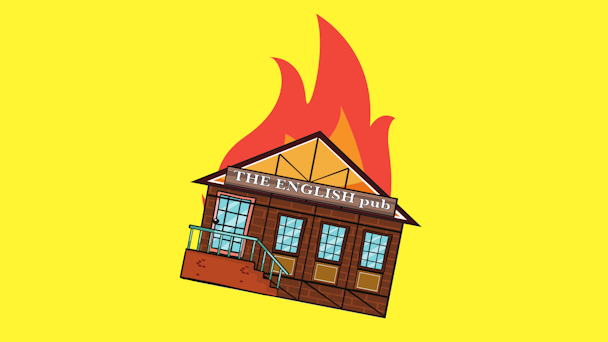6 comms tips for anyone accused of burning down a historic pub
Iconic UK pub the Crooked House burned down in a suspected arson attack and the media is putting the owners under the microscope. Gordon Young offers the couple some comms tips to navigate the heat.

The architecture was not the most crooked issue surrounding Britain’s wonkiest pub, which burned down last week. Local officials claim that arson was the most likely cause of the fire that destroyed The Crooked House near Dudley. It has been reduced to a pile of rubble.
The furor around the fire has turned into a major global story. Even The New York Times has taken a break from talking woke to cover wonk.
However, from a marketing perspective, the most interesting aspect is how the people at the center of the firestorm, Carly Taylor and her husband Adam, have declined to defend themselves or even engage with the media. They are mistaken if they hope such a strategy will make the story go away.
Advertisement
So far, nobody is suggesting they have done anything wrong, but their reputation is taking a pounding in any case. And to paraphrase an old saying – where there’s fire, there’s smoke. Anyone taking a cursory glance at the case will see the owner linked to an unexplained 2018 blaze at their landfill too.
Additionally, newspaper reports have focussed on how the pub was recently sold to ATE Farms, owned by one Carly Taylor. Articles illustrated with Insta pictures of her jet-setting lifestyle also revealed how the pub was stripped of valuable fixtures and fittings before the blaze and how a digger was reportedly rented before the accident. It has even been alleged that the building was on the brink of being listed, which in theory, could have complicated Taylor’s plans to redevelop the building.
Taylor works closely with her husband, Adam - and are former or current directors of 18 companies. But so far, they have not rebutted any of the allegations that have been inferred.
Occasionally, there can be an argument to stay schtum in the face of criticism. For example, legal complications may prevent people from speaking out. Or maybe the allegations are so baseless that they don’t want to draw attention to them by responding.
And, of course, in the world of social media, there is a lot of truth in the old phrase ‘Don’t feed the trolls.’ If the seat of the storm is Twitter/X, for example, sometimes responding just adds fuel to the fire that might quickly burn itself out.
Advertisement
But none of these conditions apply here. This couple has completely lost control of the narrative, and the story refuses to die as the media fill the vacuum with new revelations.
Which is why they are evolving into bonafide hate figures. This matters on many levels. Their businesses risk being ostracized, and public authorities may use them to divert criticism from their own failings. As a result, everyone’s favorite punch bags might get hit with bigger sanctions than they would otherwise expect.
The saga underlines that no business, big or small, is immune to a media storm. Unexpected PR fires can burn any reputation. One moment your only concern is the West Midlands waste market. The next, you are being trashed in The New York Times.
So it is important that every business thinks the unthinkable and is prepared should the worst happen. In a similar situation, such a plan would see a PR-savvy firm:
- Open lines of communication: Engaging with journalists to help shape the narrative and provide accurate information. You don’t need to respond to every media outlet. You can choose respected, credible journalists to engage with. This will demonstrate a willingness to address concerns while avoiding less reputable, sensationalist sources.
- Craft a thoughtful response: Avoid getting overly defensive or confrontational, and stick to the facts, providing context. This will help reshape the narrative in a more favorable light.
- Make sure to sound reasonable: You can acknowledge valid concerns raised by the media and express empathy for any individuals who might have been affected. Taking responsibility can defuse criticism.
- Offer some transparency: This can rebuild trust. If there were any mistakes made, acknowledge them and explain the steps being taken to ensure they do not happen again.
- Back up statements with evidence: This helps establish credibility and demonstrates that responses are based on fact.
- Get the best PR advice you can afford: The value of having an objective outsider’s perspective cannot be overstated.
Of course, the couple here are no doubt innocent victims of circumstance.
Suggested newsletters for you
But there are lessons here for bad actors. If you plan to burn down a famous landmark quietly, don’t do it in August. It’s the middle of the silly season and journalists desperately need things to write about.
Self-evident in this piece. At what other time of year would you read such a lengthy analysis of a pub fire in The Drum?

